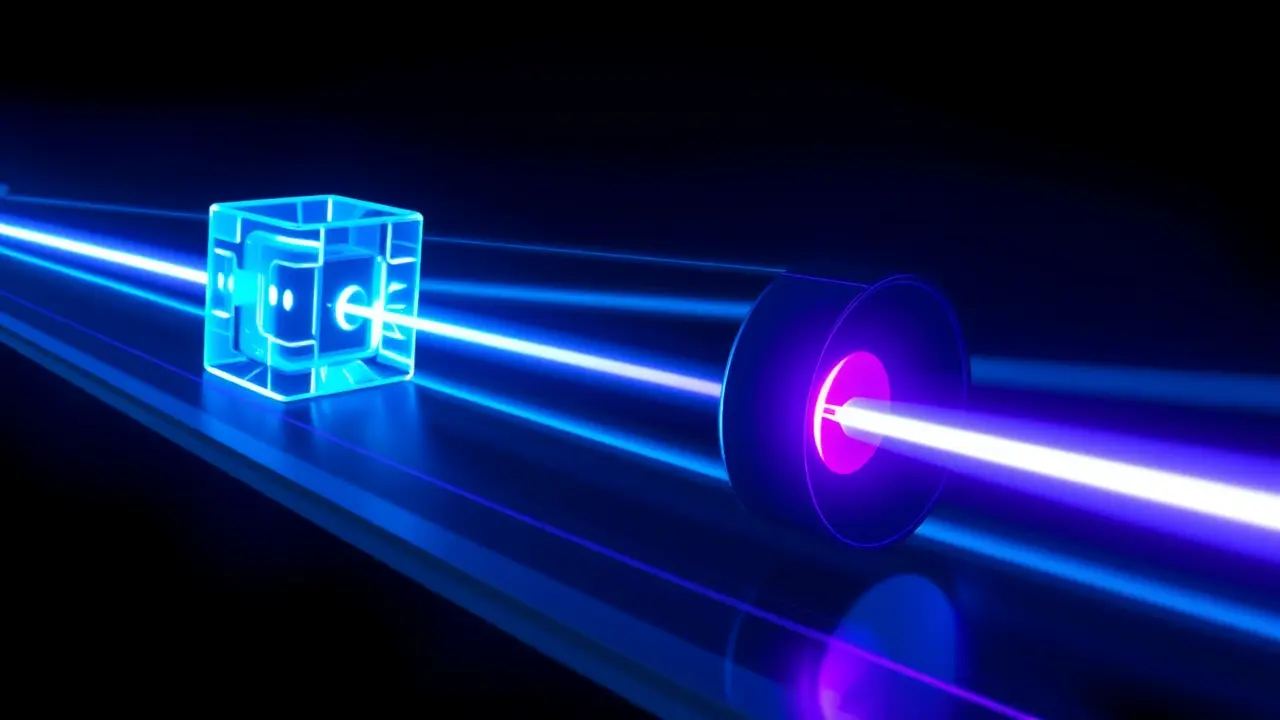
SciencephysicsOptics and Photonics
Tiny laser could transform medicine and quantum science
KE
Kevin White
5 hours ago7 min read1 comments
In a development that feels ripped from the pages of a near-future medical thriller, a team at the University of Stuttgart has fundamentally re-engineered the laser, creating a compact, short-pulse system that achieves a staggering 80% efficiency. This isn't just an incremental upgrade; it's a paradigm shift.For decades, high-power, ultrafast lasers have been the domain of bulky, expensive, and notoriously inefficient laboratory behemoths, often requiring complex cooling systems and dedicated power supplies that confined them to research basements. The breakthrough from Stuttgart lies in an elegantly simple yet profoundly effective 'multipass' design.Imagine a tiny crystal, no larger than a sugar cube, where a beam of light is not simply fired through once but is cleverly reflected and recycled multiple times within its confines. Each pass amplifies the light's energy, building power with the precision of a master watchmaker, all within a housing that fits in the palm of your hand.This leap in efficiency and miniaturization is the key that unlocks a new era of photonics. In medicine, we're looking at a future where such lasers could be integrated into portable surgical tools, enabling precise, scar-free procedures in field hospitals or remote clinics, or deployed in next-generation diagnostic devices that can analyze blood samples for diseases with a single, rapid pulse.For quantum science, this is the kind of stable, accessible hardware needed to make quantum computing and encryption more practical and widespread, moving them out of isolated, vibration-dampened labs. The implications for analytics are equally profound, with the potential for handheld spectrometers that could instantly identify environmental pollutants or hazardous materials on-site.This isn't merely a new gadget; it's a foundational technology. It echoes the transformation we saw with the miniaturization of computers from room-sized mainframes to the smartphone in your pocket. By collapsing the physical and economic barriers to high-performance laser technology, the Stuttgart team hasn't just built a better laser; they have laid the groundwork for a wave of innovation across biotechnology, materials science, and information technology that will redefine what is possible at the intersection of light and matter.
#featured
#laser
#quantum science
#medical technology
#University of Stuttgart
#multipass design
#short-pulse laser
#efficiency
Stay Informed. Act Smarter.
Get weekly highlights, major headlines, and expert insights — then put your knowledge to work in our live prediction markets.
Related News
© 2025 Outpoll Service LTD. All rights reserved.


